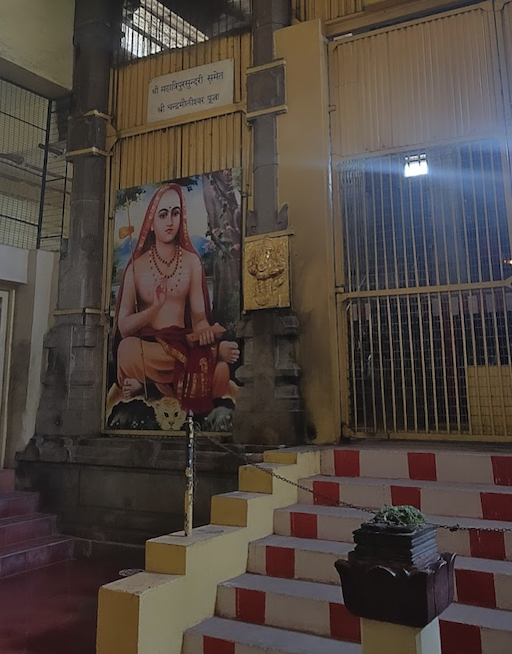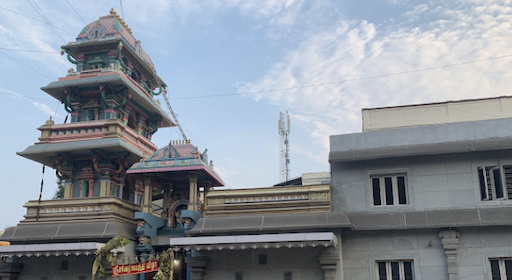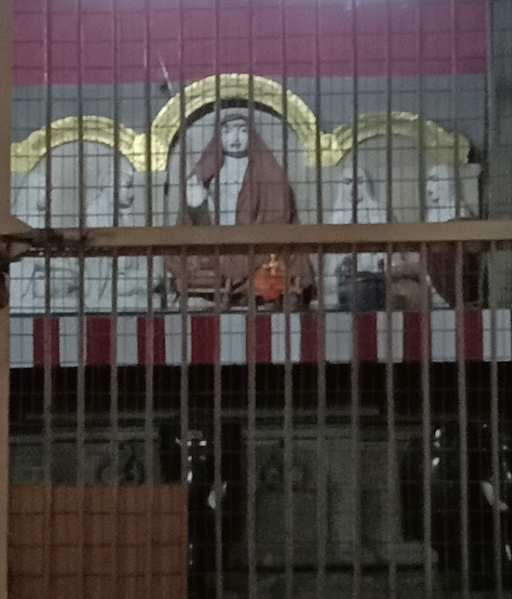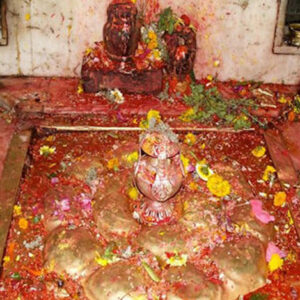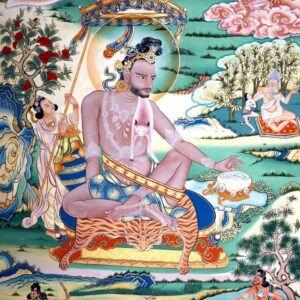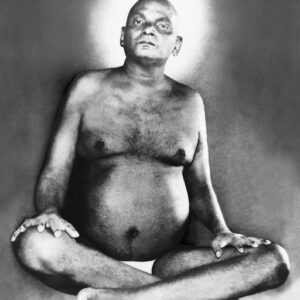This is the mantapam where regular Chandramouleshwara Puja is being conducted.
It is said that one of five Chandramouleshwara Linga received by Adi Shankaracharya directly from Lord Shiva, at mount Kailash is used during the Puja.
There is place to sit and meditate in this hall. You can go into meditative states here effortlessly.
How to get there:
The temple is located 1.7 kms West of Kanchipuram East train station.
Map: https://goo.gl/maps/k7vfqetRUiorbZJY6
About Chandramouleshwara linga Puja
Bhagavatpada Sankara got Kanchi city remodeled and also caused the reconstruction of the three principal temples of Kanchi, viz., the temples of Sri Ekamranatha, Devi Kamakshi and Sri Varadaraja with the assistance of Rajasena, ruler of Kanchi. Sankara consecrated the Srichakra before Devi Kamakshi and thereby secured Her bounteous grace for devotees having Her darshan.
A significant event in the history of Shankaracharya is his occupying the Sarvajnapeetha – the Throne of Omniscience at Kanchi. A great ascetic one of the early Acharyas of the Kanchi Shankaracharya Math – by name Jnanottama – has written a commentary entitled “Chandrika”, on Sureswaracharya’s “Naishkarmyasiddhi”. The second sloka (at the end of the commentary) alludes to the author of the Chandrika as the glory of the Sarvajnasrama by which term we have to understand the Sarvajna Pitha or the Pontifical seat the Advaita Matha in Kancheepuram.
Sankara Bhagavapadacharya retired to Kanchi, the Southern Mokshapuri, towards the end of his earthly career and shook off his mortal coils in that sacred city. A number of works state these facts. Verse 46 of the sixteenth chapter of the ninth section of the voluminous Sanskrit work “Sivarahasya” (in the printed Canareese edition No. 32), Jayachamarajendra Series of the Mysore Palace, refers to Shankaracharya’s worship of the Yoga, Bhoga, Vara, Mukti and Moksha lingas, to his success over scholars of other faiths and to his attaining siddhi (eternal bliss) at his own ashrama in Kanchi.
Markandeya Samhita, an ancient puranic treatise, consists of 100 khandas, each having sub-sections called parispandas, Sub-section 7 and 8 of the 72nd khanda of this work narrate briefly the history of Sankara. “Sankaracaritam”. A verse, in the seventh parispanda of the 72nd khanda of this work, relates that the Mahatma Sankara, attained the cit-svarupa, i.e. attained eternal bliss at Kanchi, after having consecrated Kamakshi.
Anantanandagiri’s biography of Sankara (12th century A.D.) – all versions printed and manuscripts, including the Madras University edition – says “The World Preceptor (Sankara) desiring to leave for his own abode, sitting once in the Moskhapuri of Kanchi, absorbed his gross body into the subtle one and getting reduced into the size of a thumb, attained eternal bliss and remains as the all-pervading “Cit” to this day”.
Coming to modern times, there is quite a large number of works, in different languages, written by erudite scholars mentioning Kanchi as the last resort of Sankara.
Apart from all the citations made above, it needs mention that, in the Srimukha-Birudavali (the string of honorific epithets) of the Shankaracharya Math at Kanchi (existing without change from very ancient times), the following epithet is found:
“Srimacchankara Bhagavatpadacharyanam adhisthane Simhasanabhishiktanam”
The word “adhisthane” points to Sankara’s siddhi at Kanchi.
It may be noted that the name of Sri Shankaracharya is found only in the official seal of Kanchi Kamakoti Matha. The word “Kanci-divya kshetre and the phrase “Srimacchankara-Bhagavatpadacaryanam adhisthane” in the birudavali indicate Sankara’s siddhi at Kanchi.
Sri Sankara Bhagavatpada was not merely a great philosopher and preceptor, but an adept in organising and a conspicuous national integrator of a very early period of India’s history. For safeguarding the Veda-Dharma and restoring it to its pristine glory and for propagating the Advaita discipline, the Great Acharya established monastic institutions at many of the sacred and important places of the country that he had visited during his digvijaya-yatra..
From Anantanandagiri (1119 – 1199 A.D.) whose work is the earliest biography of Sankara, down to Mahamahopadhyaya Lakshmana Suri (Author of “Bhagavatpadabhyudayam” – 1917) of the last century, a number of reputed historians, distinguished scholars and researchers have candidly stated, in their works, that the Great Sankara established monastic institutions (mathas) at many an important and sacred places that he visited, during his digvijaya tours.
Guhya-Sahasranama (Sanskrit) refers to five Shankaracharya Peethas (Maths), -Kamakoti Peetha as presided over by Sankara himself, to four disciples, Suresvara, Padmapada, Totaka and Hastamalaka, to the places of the four other peethas and to five Sphatika lingas.
